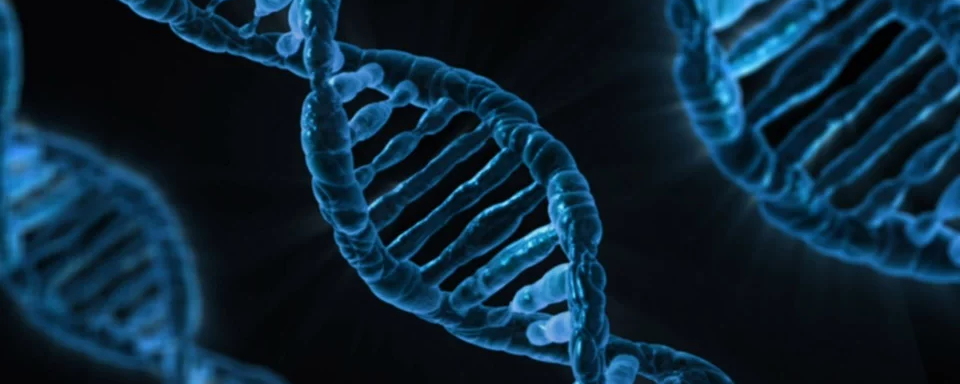by Natasha Raut
Our ability to control DNA, the very foundation of the biological world, remains astonishing, even among the plethora of advances made by humankind. In today’s laboratories, scientists are using microscopic bacteria to restitch the sequence of genes in organisms, and are seeing a possibility of designing genetically desirable human babies, or “designer babies” in the near future. This possibility may become a reality with genetic CRISPR Cas9 technology.
CRISPR was discovered by Jennifer Doudna, a UC Berkeley scientist, in 2013. CRISPR can precisely snip DNA at a particular location and replace the gap with a different DNA fragment. When viruses attack bacteria, the bacteria produces an enzyme that combats viral infection, akin to soldiers thwarting the enemy on a battlefield. Once the bacteria has destroyed the virus, smaller enzymes clear out the remains of the invading virus. These fragmented remains, stored in CRISPR, give an identity to the virus, like a photograph. This form of active immunity in bacteria consists of two parts: a guiding RNA (gRNA), and a Cas9 endonuclease. Cas9 is a cutting enzyme that stores these fragments and fights off future invasions if it recognizes the virus from the ‘photograph’ (Rodriguez-Rodriguez, et al., 2016).
Doudna’s work has allowed scientists to understand the work of Cas9 in the use of CRISPR.
When Cas9 receives any RNA thread, it begins to cut — making it the perfect tool for genetic modifications in other organisms. Not only can researchers now remove the undesired genes, but they can now also “fill the gap” with a new gene using a natural cellular process. In the process of homology directed repair, a repair template of DNA identical to the original sequence is introduced to the cell in the presence of the gRNA-Cas9 complex (Rodriguez-Rodriguez, et al., 2016).
DNA is cut to form a 3’ overhang thereby providing a protein substrate and a DNA repair synthesis primer. A hybrid DNA is formed and subsequently joined by recombination.
CRISPR has shown promising results in mice in numerous studies. In a study conducted by Yu et al., scientists set up a CRISPR/Cas9 system in the photoreceptors of mice and performed an in vivo removal of the Nrl gene (a mutant rhodopsin gene) in the retina. The loss of Nrl caused the rods to act like cones due to the absence of the rhodopsin pigment, and minimized retinal degeneration. CRISPR’s use has not been limited to animals (Yu, et al., 2017). In 2016, a study conducted by Hultquist et. al, explored successful Cas9 editing in which protected primary human T cells from HIV (Hultquist, et al., 2016).
CRISPR is in its incubation stage. The ability to make this “glitch” in an organism’s DNA has many people setting their sights on controlling the production of any protein, and by extension, any phenotypic trait. But it’s not so simple. Several genetic conditions and phenotypic traits like skin colour, height and eye colour are usually influenced by the action of more than one gene, or phylogenetic. For CRISPR to actually create ‘designer babies’, scientists need to understand the network of genes corresponding to a phenotypic trait and the effect of CRISPR’s deployment on certain genes.
As mutation-linked health issues are becoming more rampant, the large time lag between crossing the research phase of CRISPR germline editing to actual commercial application is becoming more apparent. While a more ambitious approach of resolving mutation-linked health issues may dictate the use of CRISPR to genetically modify the human germline genome, more research needs to be done into the potential implications of this therapy on human health.
CRISPR Cas9 has the potential to revolutionize the genetic engineering landscape, but it raises ethical and scientific questions that ought to be addressed. A common ethical discussion surrounding CRISPR pertains to the unexplored long term effects. While this technique sounds like the perfect fantasy for any scientist and layman alike, Cas9’s lack of ‘cleverness’ and its potential for non-specific activity poses the threat of accidental editing of wrong DNA segment. This could potentially cause life-threatening diseases. Furthermore, genetically modifying embryos implies building a new kind of “human” being. One question, thus, remains:
Who are we to change the order of nature?
Sources:
Hultquist, J. F., Schumann, K., Woo, J. M., Manganaro, L., Mcgregor, M. J., Doudna, J., … Marson, A. (2016). A Cas9 Ribonucleoprotein Platform for Functional Genetic Studies of HIV-Host Interactions in Primary Human T Cells. Cell Reports, 17(5), 1438–1452. doi: 10.1016/j.celrep.2016.09.080 https://www.sciencedirect.com/science/article/pii/S2211124716313365
Rodriguez‑Rodriguez, D., Ramirez‑Solis, R., Garza‑Elizondo, M., Garza‑Rodriguez, M., & Barrera‑Saldana, H. (2019). Genome editing: A perspective on the application of CRISPR/Cas9 to study human diseases (Review). International Journal of Molecular Medicine. doi: 10.3892/ijmm.2019.4112 https://www.ncbi.nlm.nih.gov/pmc/articles/PMC6414166/
Yu, W., Mookherjee, S., Chaitankar, V., Hiriyanna, S., Kim, J.-W., Brooks, M., … Wu, Z. (2017). Nrl knockdown by AAV-delivered CRISPR/Cas9 prevents retinal degeneration in mice. Nature Communications, 8(1). doi: 10.1038/ncomms14716 https://www.nature.com/articles/ncomms14716
